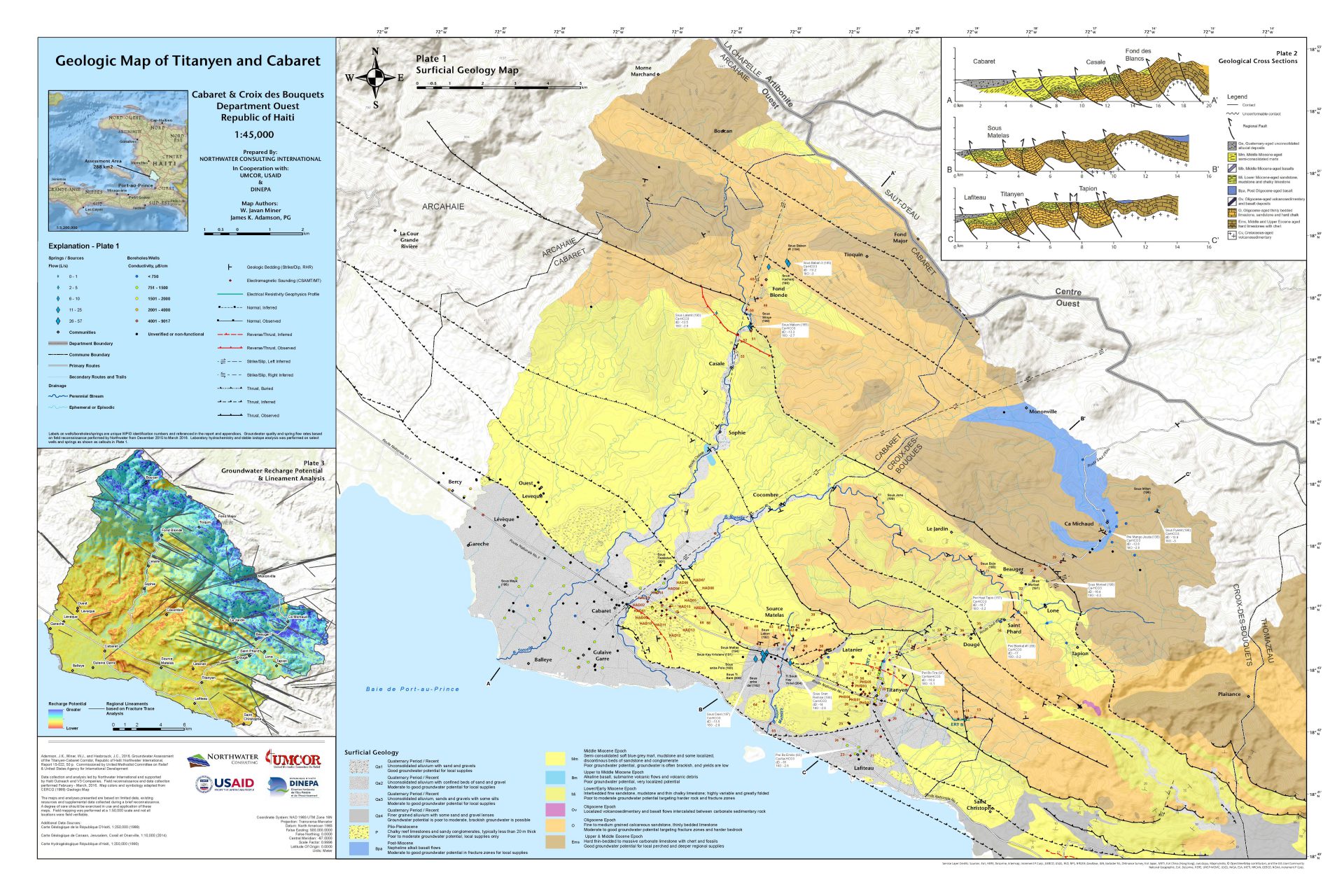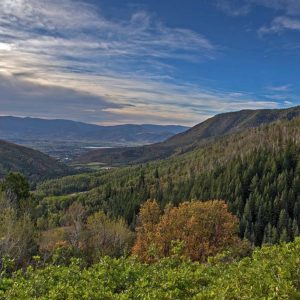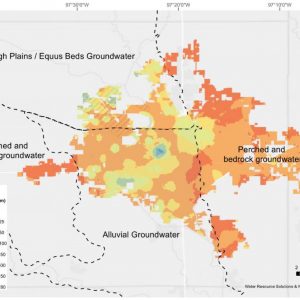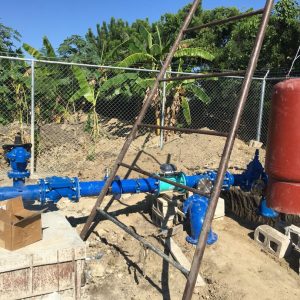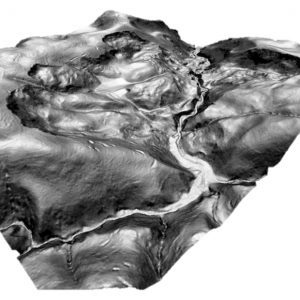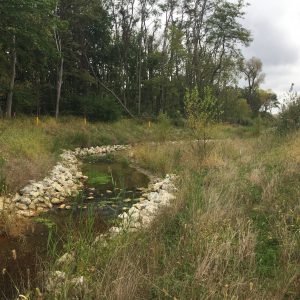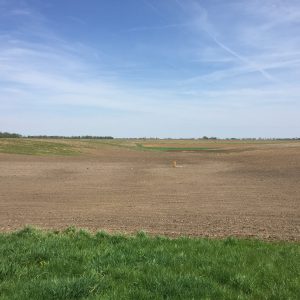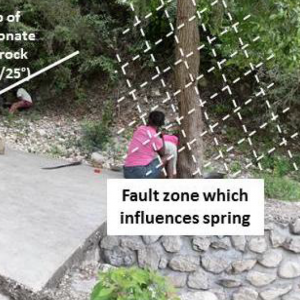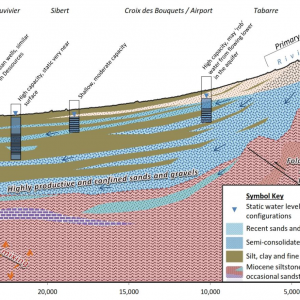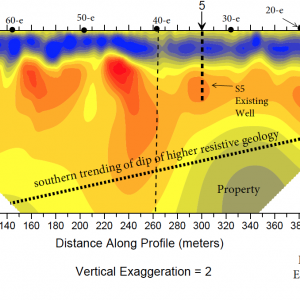USAID and UMCOR commissioned Northwater International to assess regional groundwater supply potential to support one of the fastest growing regions of Haiti.
EXECUTIVE SUMMARY FROM REPORT
The assessment focused on evaluating the potential for sourcing large and sustainable quantities of good quality groundwater to support regional development of the growing corridor between Titanyen and Cabaret in the Ouest Department of Haiti. The analysis suggests that sufficient groundwater resources are likely available to support regional development, however, location-specific studies and careful management are necessary for safe development.
To support this objective, several phased activities were performed over a short three-month assessment and reporting period. The primary activities included: (i) literature review and desk study, (ii) an inventory of water sources in the study area, (iii) a two-phase field reconnaissance led by a licensed professional geologist, (iv) hydrochemistry and isotope sampling of water sources, (v) groundwater recharge estimates, and (vi) geophysical surveys.
Following completion of these activities, the results were analyzed and synthesized in the context of achieving the focused regional-scale objectives of the assessment, and outlining a preliminary strategy for groundwater exploration. Based on the assessment, positive indicators suggest that regional groundwater supplies are likely available in the study area to support the growth and development of the corridor. Several aquifer types are present and were evaluated in the study area:
- Carbonate bedrock aquifers: Primary aquifer system available to support regional development, the most expansive coverage, highest rates of recharge, favorable water quality, and aquifer properties that likely support large production in strategically targeted areas. The assessment largely focuses on this resource.
- Unconsolidated alluvial sand and gravel aquifers: Smaller aquifers, generally with good quality water, but not large enough to support and sustain regional water demands. These aquifers are important local water supplies, especially for the Cabaret municipal area.
- Igneous basalt aquifer: Small aquifer located within a basalt lava flow that filled in valleys high in the mountains. Produces good quality water from fracture and weathered zones, but not large enough to support and sustain regional water demands. Existing wells in this aquifer are important local water supplies.
- Semi-consolidated bedrock: This rock has very poor groundwater potential, overlies the carbonate bedrock aquifers and covers a large portion of the study area. Groundwater found is often brackish and unsuitable for drinking.
The carbonate bedrock aquifers are considered the most feasible solution to support large quantities of sustainable and good quality groundwater on the scale of 7,500 to 25,000 m3/day. These aquifers are not often discovered in the populated areas of the study area as they are hidden at various depths beneath less favorable semi-consolidated rock. Whilst there are many positive indicators that validate these aquifers and their suitability to support the region, the complex geology makes these aquifers difficult to target and characterize. The aquifers are also dissected and flow is interrupted due to the complex faulting and folding in the region. Favorable well yields are dependent on intersecting secondary porosity in the form of fracture zones and solutions cavities that lie beneath the regional zone of saturation. The carbonate bedrock aquifers are subject to manageable threats and vulnerabilities that include contamination, land use changes, climate change, and negative effects from over exploitation. As with any aquifer development, achieving and sustaining freshwater demands will require groundwater exploration activities, continued scientific characterization, careful planning, management, and monitoring.
Groundwater exploration and development of the carbonate bedrock aquifers is recommended based on the assessment. Ten areas for test drilling throughout the study area have been selected based on a synthesis of criteria that includes geology, water quality, groundwater recharge, and geophysical results. The exploration areas have potential ranging from poor to good; no areas were considered to have ‘very good’ potential based on categories we apply throughout Haiti. Exploratory well drilling is necessary to substantiate and characterize the carbonate bedrock aquifers and better understand how the complex geology influences the flow, recharge, and local availability of groundwater. Due to the lack of empirical aquifer knowledge and data, a successful exploration program requires that it be pursued as a hydrogeological study that includes test well drilling.
Whilst this area of Haiti presents some of its more complicated geology and hydrogeology, we are encouraged by the results and findings of this assessment. Targeting the carbonate bedrock aquifers in the context of regional water supply development is not considered an easy task and comes with risk. However, the potential for great rewards that would benefit this region and its population warrants further attention.
